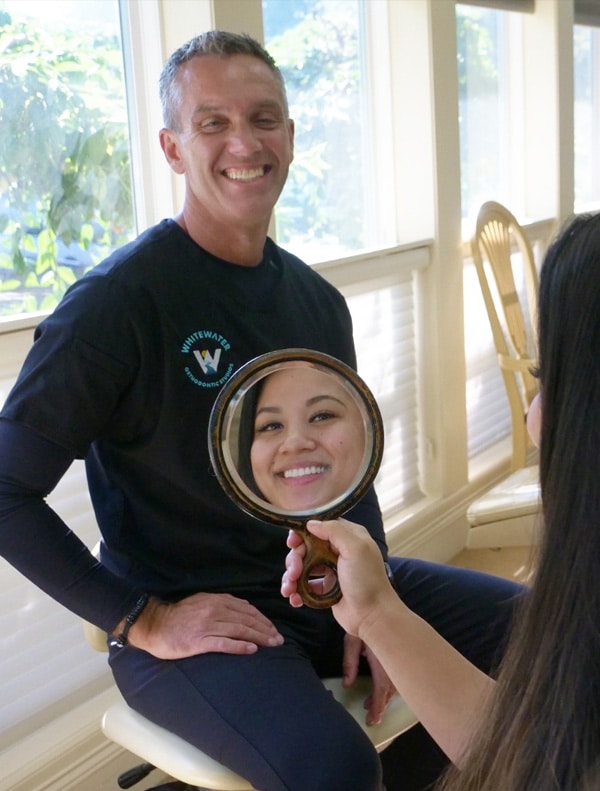Make Your Dream Smile Come True
Discover the path to your perfect smile
with our state-of-the-art orthodontic care.
Make Your Dream Smile Come True
Discover the path to your perfect smile with our state-of-the-art orthodontic care.

Welcome To Whitewater Orthodontic StudiosIn Yelm & Tacoma, WA
At Whitewater Orthodontic Studios, we believe that the essence of good health means helping people—especially children—feel good about themselves, about us, and about others. Orthodontic treatment is more than just straightening teeth. Orthodontics builds self-esteem and self-confidence and will nurture this kind of good health.
Our expert team, led by Dr. Andrew Leavitt, offers a variety of orthodontic treatments tailored to meet your individual needs. Whether it’s Invisalign, clear Lightforce braces, or traditional braces, we’re here to ensure you receive the best care. Join us for a unique orthodontic experience that promises excellence and a warm welcome.
We offer top-tier treatments:
- Invisalign: This innovative system straightens teeth without brackets, bands, or wires, making it a discreet and comfortable option for patients.
- Invisalign for Teens: Teens can straighten their smiles without feeling self-conscious and without food restrictions, making it a popular choice for younger patients.
- Traditional Braces: Most patients use metal braces to straighten their teeth, as they are the most common type of orthodontic treatment.
- LightForce Braces: With LightForce’s digital imaging and planning, Dr. Leavitt can design your personalized treatment plan from start to finish with more precision and accuracy than with traditional braces.
In addition to these treatments, Whitewater Orthodontic Studios offers a range of orthodontic appliances, both fixed and removable, to cater to the unique needs of each patient.
Contact Our Office Today
Talk to us today to learn more and schedule your first free consultation appointment with Dr. Andrew Leavit at 253-582-5196. We can’t wait to meet you.
Meet Your Orthodontist
Dr. Andrew Leavitt
“I’m Dr. Andrew Leavitt and I sincerely look forward to meeting you. I love creating beautiful smiles for children, teens and adults in our community.
As a parent myself, my team and I are committed to listening to you to make your orthodontic journey as easy as possible.”

About Dr. Leavitt
Watch Video

Cutting-Edge
Treatment Options
Discover the latest advancements in orthodontic technology at our office. We offer a range of modern, efficient options to create your perfect smile quickly and affordably.
5-Star Rated Orthodontist
Our Patients Love Us
Orthodontics for All Ages
We offer leading-edge orthodontic care in a fun, relaxing environment to encourage and comfort you. We create customized, aesthetic treatment options for patients of all ages.
Early Orthodontics
All children should be seen by an orthodontist by age 7 to determine if early orthodontic treatment is right for them.
Teen Orthodontics
Between the ages of 11 and 15 is the most common time for orthodontic treatment, and for good reasons
Adults Orthodontics
Orthodontics is not just for children and teens! In fact, 1 in every 4 patients in orthodontic treatment is an adult. No one is to old for orthodontic treatment.



